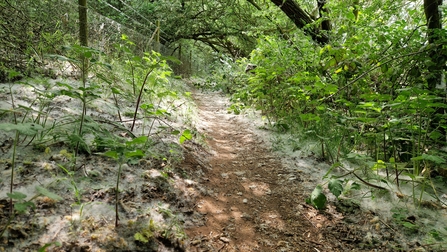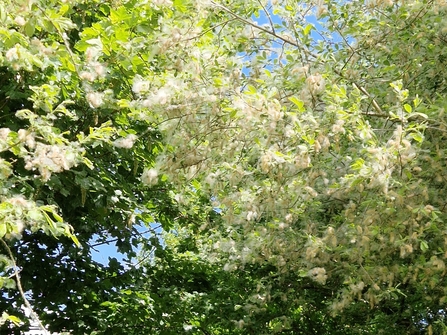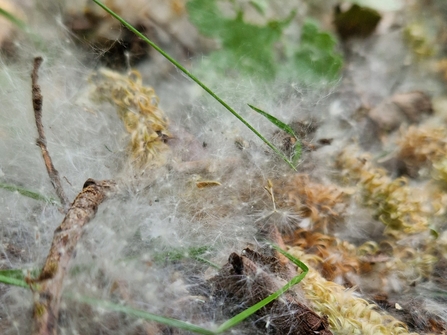Have you noticed how, over the past couple of weeks, the air has been completely overrun by fairies?
If you know what I mean by fairies, great. If you don’t, “fairies” are the name a lot of people I know give to the small fluffy things that start flying around in spring and summer. They often resemble dandelion puffs without the seeds hanging from them, and they come in a few different size. Most common right now are ones about the size of an apple seed.
They’ve been especially noticeable this year because of their sheer number. More than once I’ve looked outside to see something like confetti blowing along with the dust in the wind. Even that’s nothing compared to the local woodland, where the layer of white fluff over the floor, plants, and trees make it look like Shelob moved there from Mordor.




